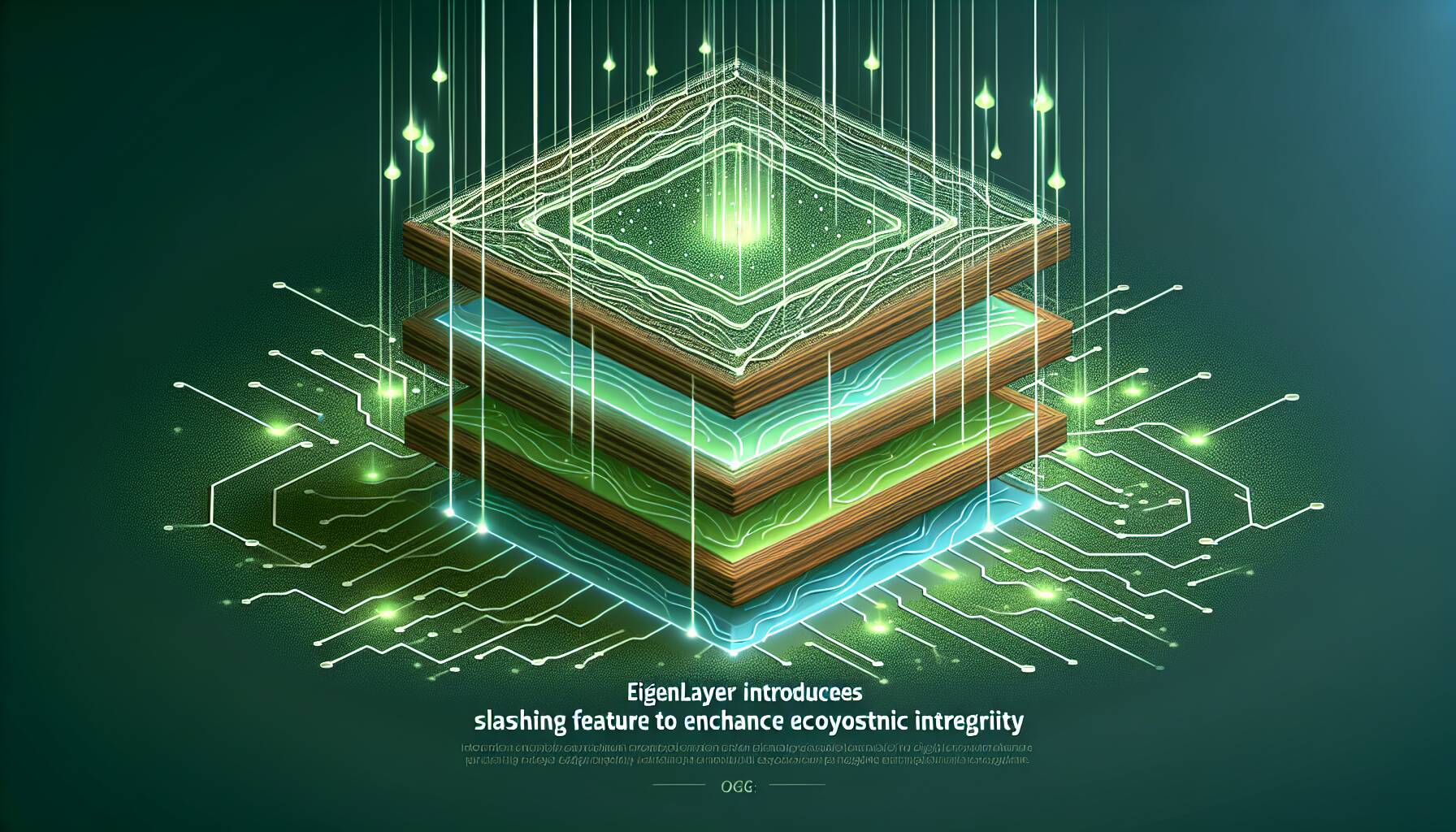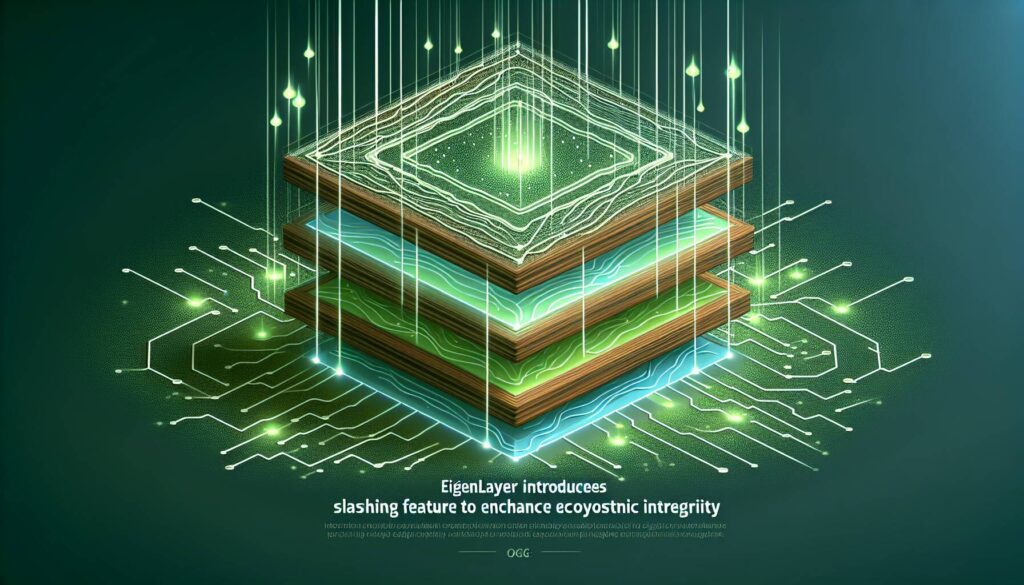In the rapidly evolving world of cryptocurrency, EigenLayer has emerged as a significant player since its launch last year, captivating the Ethereum community with its innovative approach. However, amidst high expectations, one essential feature was notably absent: slashing. This feature is critical for maintaining the integrity of decentralized applications by enabling penalties for misuse of the platform. In a recent announcement, EigenLayer revealed that slashing is set to debut on April 17, marking a pivotal moment for the protocol.
EigenLayer has been at the forefront of a groundbreaking concept known as restaking, which allows Ethereum users to enhance the security of additional protocols by recommitting their staked Ether. The introduction of slashing will empower Actively Validated Services (AVSs)—the applications built on EigenLayer’s foundation—to implement custom conditions that penalize non-compliant operators while rewarding those who fulfill their responsibilities. As EigenLayer describes it, this advancement is a leap towards fostering a dynamic marketplace, where operators can earn rewards for their contributions and AVSs can provide trustworthy services.
“This is a major step forward in the EigenLayer protocol because it allows for a free marketplace where Operators can earn rewards for their work and AVSs can launch verifiable services,” EigenLayer stated in a blog post.
The response to EigenLayer has been phenomenal, with the platform attracting a staggering $15 billion and generating significant buzz for its EIGEN token, which launched in October. The ecosystem is expanding rapidly, boasting over 100 AVSs currently under development. Notable projects include EigenDA, a data availability service, and ARPA Network, which focuses on trustless randomization. However, the delay in implementing slashing has opened opportunities for competitors, such as Symbiotic, which permits the restaking of various assets and has begun to draw interest from EigenLayer’s early adopters.

Key Developments in EigenLayer’s Ecosystem
The following points highlight significant advancements in the EigenLayer protocol, which could impact Ethereum users and developers:
- Launch of Slashing Feature:
- Set to be introduced on April 17, marking EigenLayer’s first “feature complete” version.
- Provides a mechanism to penalize bad actors and incentivize good behavior within the ecosystem.
- Restaking Concept:
- EigenLayer allows Ethereum users to secure additional applications by recommitting their staked Ether.
- This innovation enables users to earn rewards beyond the base layer without the need to unstake their Ether.
- Actively Validated Services (AVSs):
- More than 100 AVSs are currently in development, showcasing a growing ecosystem around EigenLayer.
- AVSs can implement custom conditions that reward compliant operators and penalize those who fail to meet requirements.
- Market Growth:
- EigenLayer attracted over $15 billion within a year, indicating strong market interest and investment.
- Launch of the EIGEN token in October further boosted its visibility and appeal.
- Competition and Market Dynamics:
- The initial lack of slashing allowed competitors like Symbiotic to gain traction in the restaking market.
- Adoption by early users including Hyperlane and Ethena indicates a competitive environment that EigenLayer must navigate.
EigenLayer’s Milestone: A Game-Changer or Just Catching Up?
The crypto landscape is ever-evolving, with each innovation competing fiercely for attention and user adoption. EigenLayer, a promising startup that gained considerable traction last year by introducing the concept of restaking, has faced scrutiny for its initial lack of a critical feature: slashing. The anticipation surrounding the upcoming implementation of slashing on April 17 has reignited discussions about EigenLayer’s competitive advantages and disadvantages in the market.
With more than $15 billion flowing into the EigenLayer ecosystem and over 100 actively developed Actively Validated Services (AVSs), the startup has built a solid foundation. Its pioneering approach allows Ethereum users to extend the utility of their staked Ether, positioning EigenLayer as a groundbreaking player. However, the absence of slashing left it vulnerable, as competitors like Symbiotic, which supports restaking for a broader range of assets, seized the opportunity to fill that gap. This flexibility in asset management gives Symbiotic a notable edge, attracting early adopters who are keen to diversify their staking strategy.
Moreover, EigenLayer’s decision to finally introduce slashing not only enhances its offerings but also provides a structured environment for AVSs. By allowing app developers to set conditions for penalizing underperforming operators, EigenLayer will foster accountability and encourage high-quality service provision. This move could potentially attract a new wave of developers and investors looking for more reliable options within the Ethereum ecosystem.
However, the introduction of slashing presents challenges as well. It comes with the inherent risk of disincentivizing participation among operators who fear penalties. In a young and dynamic market, negative perceptions or experiences can deter potential users. For some projects, this move might prove detrimental, as operators weighing the risks associated with slashing may lean towards platforms like Symbiotic, where slashing is less of an immediate concern.
In summary, EigenLayer’s implementation of slashing could significantly bolster its competitive standing against market rivals, appealing to a diverse segment of developers, investors, and users. However, it must tread carefully to ensure that the penalties do not alienate existing and prospective operators who are pivotal to its ecosystem’s growth. As EigenLayer strives to cement its status as a leader in the restaking space, the broader implications of this feature will be crucial to watch.

















